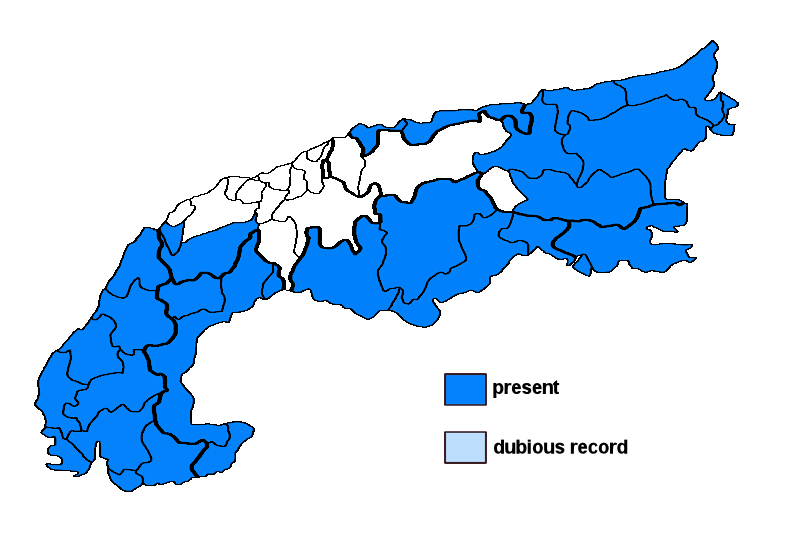Caloplaca flavescens (Huds.) J.R. Laundon var. flavescens
Syn.: Amphiloma heppianum Müll. Arg., Caloplaca heppiana (Müll. Arg.) Zahlbr., Caloplaca sympagaea (Ach.) Sandst., Gasparrinia heppiana (Müll. Arg.) Verseghy, Lecanora heppiana (Müll. Arg.) Hue, Lecanora sympagaea Ach., Lichen flavescens Huds., Physcia heppiana (Müll. Arg.) Arnold, Placodium callopismum (Ach.) Mérat var. plicatum (Wedd.) Leight., Placodium flavescens (Huds.) A.L. Sm., Placodium heppianum (Müll. Arg.) Puget, Placodium sympageum (Ach.) Bremme, Variospora flavescens (Huds.) Arup, Frödén & Søchting
Lichenised.
Substrate: calciferous rocks, intermediate rocks (such as calciferous schists)
Altitudinal range: from the mesomediterranean belt (potential vegetation: evergreen broad-leaved forests dominated by Quercus ilex) to the montane belt (potential vegetation: deciduous forests dominated by Fagus sylvatica and closed coniferous forests with Picea abies)
Note: a mainly temperate species found on limestone, dolomite, calciferous sandstone, sometimes on brick, mortar and roofing tiles, and walls, monuments etc., somehow less helio- and xerophytic than the closely related C. aurantia; sometimes ascending to above treeline; widespread throughout the Alps.
Austria: Salzburg; Kärnten; Steiermark; Oberösterreich; Niederösterreich (incl. Wien); Burgenland; Germany: Oberbayern; Schwaben; Switzerland: Vaud; Valais; France: Alpes-de-Haute-Provence; Haute-Alpes; Alpes-Maritimes; Drôme; Isère; Savoie; Haute-Savoie; Vaucluse; Var; Italy: Friuli; Veneto; Trentino Alto Adige; Lombardia; Piemonte; Valle d'Aosta; Liguria; Slovenia: Alpine and Pre-Alpine Slovenia; Trnovsky Gozd;





